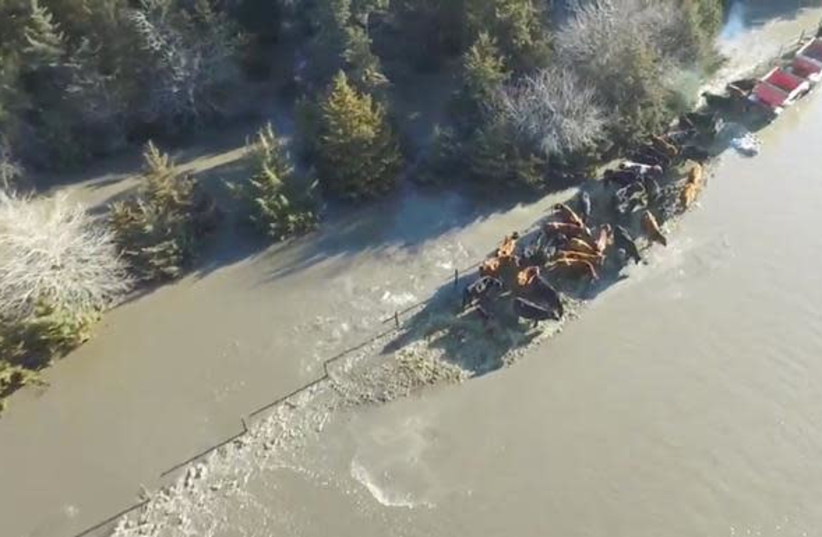Scientists at the University of California, Los Angeles, said that California could be hit by a once-in-a-century “megaflood” – and that climate change could possibly exacerbate it.
The last time California had a megaflood was in 1872, when there was a month-long storm in which 30 inches of rain and about 100 inches of melted snow hit San Francisco. These are also the same predictions given for this flood.
UCLA climate scientist Dr. Daniel Swain co-wrote the study, called “ArkStorm Scenario,” based on the 1872 megaflood.
“This risk is increasing and was already underappreciated. We want to get ahead of it.”
Dr. Daniel Swain, a UCLA climate scientist
“This risk is increasing and was already underappreciated,” Swain said. “We want to get ahead of it.”

The likelihood that the storm will reach the Sierra Nevada is very high. The region could see 25-34 feet of snow. Most of California’s main highways would be completely washed out or inaccessible in such conditions.
The researchers used a combination of new high-resolution weather modeling and existing climate models in order to compare the scenarios, which would involve a long series of storms over the course of a month, caused by atmospheric rivers.
What are atmospheric rivers?
Atmospheric rivers are streams of moisture-rich air at the mid-levels of the atmosphere with connections to the deep tropics.
According to the study, in order for California to have a megaflood, there would need to be a nearly stationary zone of low pressure in the northeast Pacific that would cause high-end atmospheric rivers to develop on the California coastline.
The possible future megaflood
“There are localized spots that get over 100 liquid-equivalent inches of water in the month,” Swain said, referring to the future scenario in his study. “On 10,000-foot peaks, which are still somewhat below freezing even with warming, you get 20-foot-plus snow accumulations. But once you get down to South Lake Tahoe level and lower in elevation, it’s all rain. There would be much more runoff.”
A megaflood could cause serious damage but Swain said that it might be possible to predict when it will happen in advance and warn local residents.
“This is something we’d see coming three to five days out, and I’d hope a week and perhaps even two weeks out, with a probabilistic type of prediction,” he said. “We’d have a decent amount of warning for it.”
Swain added that according to his simulation, it would be easy to predict when the flood might occur based on the large-scale chain-reaction El Niño or La Niña atmosphere-ocean patterns. He said that it is more likely to occur during the El Niño winters rather than the La Niña winters.
Furthermore, Swain said that California has already seen increases in climate-driven droughts and record-breaking wildfires over the past few years. Climate change could amplify flooding and trigger a megaflood earlier than predicted.
The next goal of researchers is to map out exactly where the flooding could have the most severe impact and inform statewide plans to mitigate it, possibly by diverting the water away from populated areas or by building floodplains.
